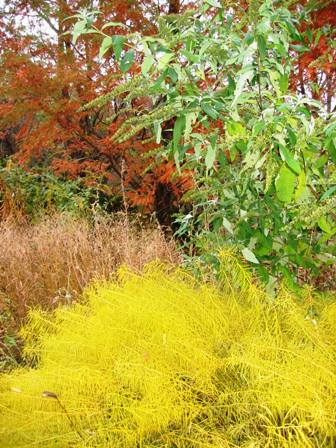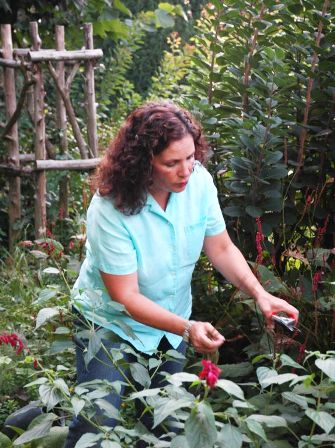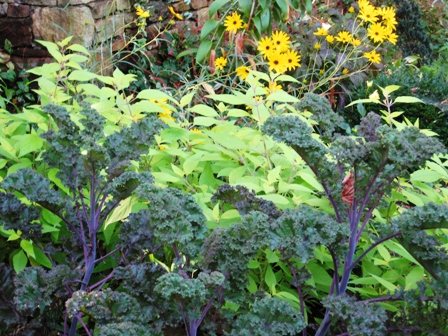I’m writing this letter to you as a seasoned gardener who over the past 30 years of working the soil has made more than my share of mistakes: and has learned some things along the way. As your elder, I want to share some of what I’ve gleaned in the hope that it will make your ‘garden making’ less frustrating and more enjoyable.
Here’s what I want to tell you.
 1. Pay attention to the size of each plant at maturity and the distance needed between the plants when putting them into the ground. I know, it can be tough to visualize the plant at maturity if you haven’t used it before and you so badly want your garden to look lush and filled with color and texture. But trust me: you’re going to save a whole lot of money, because you won’t buy way more plants than you need. Your garden will look much better too, if it’s not overcrowded, and the plants will be healthier in the long run. I know it bothers you to have a lot of empty space between those properly spaced plants, but there’s an easy solution: tuck in your favorite annuals and tender perennials as fillers for the first few years.
1. Pay attention to the size of each plant at maturity and the distance needed between the plants when putting them into the ground. I know, it can be tough to visualize the plant at maturity if you haven’t used it before and you so badly want your garden to look lush and filled with color and texture. But trust me: you’re going to save a whole lot of money, because you won’t buy way more plants than you need. Your garden will look much better too, if it’s not overcrowded, and the plants will be healthier in the long run. I know it bothers you to have a lot of empty space between those properly spaced plants, but there’s an easy solution: tuck in your favorite annuals and tender perennials as fillers for the first few years.
2. When adding annuals for spring color to walkways, front of beds and around mailboxes or lightposts, try something different, rather than what’s popular in your neighborhood. I understand that it’s natural to think that if the neighbors are using these plants, they’re a good choice. Well, these plants may thrive in your area but do you really want your garden to be a replica of those folks who live around you? Take a few extra minutes at the nursery perusing the isles. Check out other annuals that will not only work in your yard but that grab your eye. Early spring herbs, cosmos, snapdragons, ageratums and pansies, when grouped together, can make a refreshing and colorful vignette.
3. Spend the extra dollars on sturdy, long lasting tools. I know it’s easy to think that all tools are the same. And you’d rather spend the money you’ve budgeted on plants. But the truth is, without high quality tools, life as a gardener can be pretty tough. After trying it on the cheap, I eventually went for quality. I’ve had my Smith and Hawken spade and fork for over 25 years. Each spring when I take them out to begin their season of work, I think to myself: ‘Aren’t I lucky to have these old friends back with me for another season’?
4. Until you become a more experienced gardener, keep the shape of beds simple and easy to work in. Rectangular and square shaped beds are the best choices. Once you have more experience, then you can create island and weaving beds. Don’t forget the width of pathways. Even if you want to cut narrow, secondary paths, they still need to be wide enough so that your wheelbarrow can pass through easily.
5. Try to control your impulse to buy every plant that you fall in love with at the nursery. I know that it’s difficult to do when you feel like you’re a kid in a candy shop. But being disciplined about your purchases will pay big dividends on the other end. As a matter of fact, you might want to make a rule with yourself that your first visit to the nursery is strictly one where you check out the plant material with no buying at all! Why don’t you make lists, go home, do some research, then go back and buy.
6. On that note, when it comes to designing and buying perennials, there are a few basic rules that can be helpful. First, limit the varieties of perennials that you use in your garden. Whatever the # is of perennials on your final list, cut it in half. So, if you initially had 12 varieties on your list, cut it to 6. Second, buy large numbers of one type of perennial. If you had written down originally that you were going to buy 3 of one perennial, buy at least 7. Seems like alot? Believe me, it won’t be! Now here’s the tough part. Try to select perennials in different shapes, sizes and colors (including leaf color). And make sure that each perennial still adds something to your garden even when it’s not in bloom.
7. Don’t plant in straight rows, except in a vegetable garden. They’re deadly! Think in terms of planting in waves, sideways circles or ovals nudging up against each other. It’s almost like doing a puzzle. You’ll know when all the pieces connect. And like everything in life, the more you practice, the better you’ll be at it. Remember as you lay the plants out in the garden to keep them in their containers so that you’re sure the design is what you want before you start plopping them in the ground.
8. Find some favorite plants that you can depend on in practically any situation. Over the years, Heuchera ‘Palace Purple’, Salvia nemerosa, Artemis ‘Powis Castle’, Dianthus sp. Echinacea sp. Molinia ‘Windspiel’, Panicum virgatum and Geranium sp. have become some of the perennials that I can use in a pinch and they always come through for me.
9. Add shrubs to garden beds. There are so many magnificent ones from which to choose. The difficult part will be deciding which ones are the best to use for the location where they’re to be planted. Remember, shrubs can become quite tall and wide at maturity so make sure that your space can handle them. Try to envision where you’re going to plant them before buying them. I would suggest that you buy at least 3 of one type of shrub and either group them together or dot them throughout your garden to create a kind of rhythm. The eye loves repetition.
10. The most important thing that I learned throughout these decades of gardening is to trust my instincts. You can follow every rule in the book and although your garden may become a more cohesive landscape due to that, it can still lack soul. If you listen to your instincts, you have a much greater chance of creating a garden that is unique and personal: one that reflects the deepest of who you are.
And one final note: be kind to yourself. The truth is, a huge part of gardening is making mistakes. If you can look at all of your mistakes and missteps as worthwhile lessons, you’ll experience less frustration and will have the opportunity to learn much more about gardening and yourself. Remember, gardening is a practice: no less so than studying a musical instrument or yoga. Use it for all it has to offer you.
With love,
The Elder Fran – December 2009
So….that’s the advice that I would want to give to myself as a nascent gardener 30 years ago. How about all of you? What are some of your words of wisdom that you want to pass onto your earlier self?


